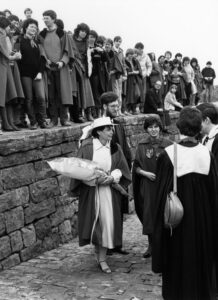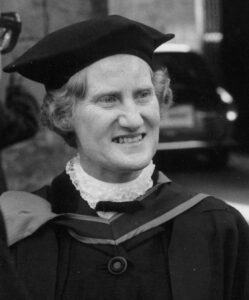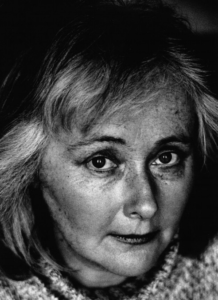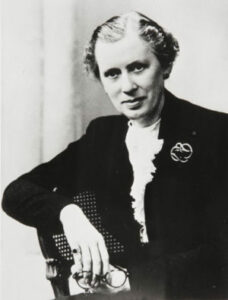Pioneering Women
St Andrews saw many firsts in its centuries of history, from lifelong campaigners of women’s education to Scotland’s first female professor. These people made a massive difference to the modern world through activism and politics, explore their stories here!
After reading the information below, use our pioneering women of St Andrews quiz to see what you can remember.
Lumsden was recruited to be the first headmistress for St Leonards School at its conception in 1877. Under her guidance, St Leonards was born as a progressive school that provided young Scottish women with the same opportunities public schoolboys in England were receiving – the first school of its kind in Scotland.
show moreLumsden’s next contribution to women’s education came with University Hall in 1896 when she became the first warden of the first female hall at the University. Her vision was to unite women to strengthen and support their educational journeys.
show lessFrances Helen Melville (1873-1935) was a suffragist and lifelong campaigner for women’s education. Melville graduated from the University of Edinburgh in 1897 with a first-class Master of Arts in Philosophy.
show moreShe was employed there as a tutor for three years before working as a lecturer at Cheltenham Ladies’ College. Following this, she moved to St Andrews to become the second warden of University Hall. Melville was the first woman to attain a Bachelor of Divinity in Scotland in 1910.
show lessKatherine Whitehorn CBE (1928-2021), was a renowned journalist and author. In 1982, she was elected as rector of the University of St Andrews – the first female to hold this role in any Scottish university.
show moreWhitehorn was the first woman to have a column in The Observer and was appointed Commander of the Order of the British Empire (CBE) in 2014 for her services to journalism.

Dr Agnes Blackadder was a Scottish medical doctor born on December 4th 1875 in Dundee. The daughter of Robert Blackadder, a Dundee based architect and engineer, she spent most of her childhood in Dundee, living in West Ferry and attending the High School of Dundee.
show moreDr. Blackadder became the first female graduate of the University of St Andrews on the March 29th 1895. She was able to graduate ahead of time because she compressed her studies by taking subjects concurrently. Dr. Blackadder legacy at St Andrews is reflected by the university naming a hall of residence after her.
show lessKathleen MacIver (1921-2011) was the first woman to chair a department at the University of St Andrews. Her installation as head of Geography was later followed by her appointment as the first woman Dean of Arts in the University.
show moreDespite facing overwhelming opposition and doubt of her abilities, she was highly successful in her role and went on to have other prominent positions within the University. MacIver inspired a generation of women to pursue careers in academia.

Sue Innes was a feminist campaigner, journalist, and academic who helped establish St Andrews as a centre for second-wave feminism.
show moreShe was a student here from 1970 to 1974 and founded the Women’s Liberation Movement (WLM) and was the head of the University magazine Aien. After graduation, Innes moved to Edinburgh, where she worked as a journalist, appearing on BBC Scotland and reporting in Parliament. She later received her doctorate from the University of Edinburgh and became the foremost advocate for women’s rights before passing away in 2005 at the age of 57.

Margaret Fairlie (1891-1963) was born on West Balmirmer Farm, Angus. She studied medicine at the University of St Andrews and University College Dundee, graduating in 1915. Dr Fairlie began working at Dundee Royal Infirmary and teaching in the medical school in 1920.
show moreDr Fairlie eventually became Head of Clinical Gynaecology in Dundee and Professor of Obstetrics and Gynaecology in St Andrews, despite opposition from the University Board. Adverse in the ability to overcome obstacles as a woman in a male-dominated field, she became the first female professor in Scotland.

Dr. Elizabeth Garrett was a physician born on June 9th 1836 in Whitechapel, London. In 1862, she became the first woman to matriculate at the University of St Andrews, with the support of a few medical professors and Vice Chancellor John Tulloch of St Mary’s. However, the senatus prohibited her entrance to the university.
show moreShe had also attempted to enrol formally as a medical student at several teaching hospitals in London, as well as at the University of Edinburgh and University of London. All of these attempts were unsuccessful. Despite numerous setbacks, she persisted in her goal to become a doctor, eventually passing the exams from the Society of Apothecaries, becoming the first woman in Britain qualified by this organisation.
show less